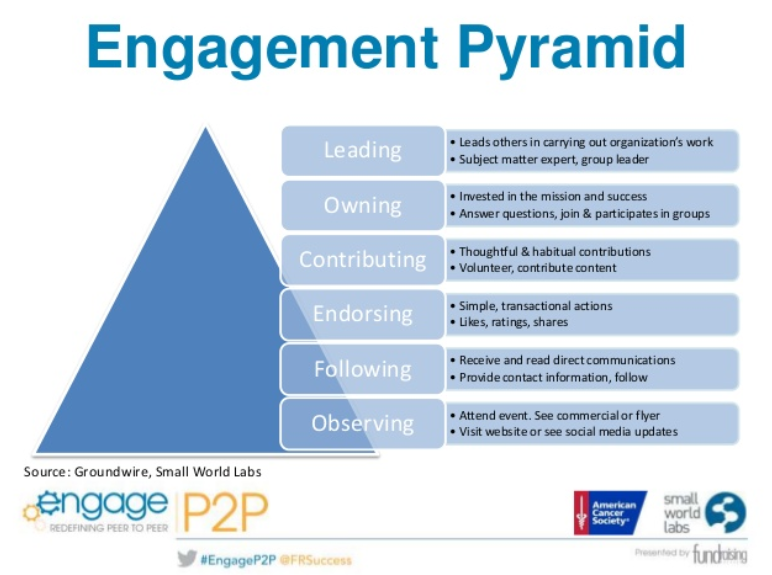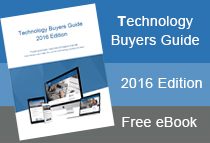The Member Engagement Pyramid: How to Grow your Online Community

It’s every association’s dream to have highly engaged members, but unfortunately this is not always the case. The aim for all associations is to get consumers to become members and then for those members to increase engagement with the organisation and then to retain those highly engaged members.
Small World Labs has established these six steps to form the member engagement pyramid [see image below]:
1. Observing 2. Following 3. Endorsing 4. Contributing 5. Owning 6. Leading
Observing Stage
This is when a user finds your membership website and is having a look thought your websites pages and social media.
Staff can also monitor these stages via Google Analytics. Look at your bounce rate, if you have a high bounce rate it means the user is leaving the website straight away and are not necessarily finding what they are looking for. Lower bounce rates indicate users are interested in what you’re offering and looking around. The average time on site is another indicator of how long users are staying on your membership organisation website.
Following Stage
This is when the consumer takes the next step to becoming a web friend or member by requestion more information or by signing up to become a web friend or member. The person then gives their person details to the organisation so they can begin direct communications with them. The user also starts to follow the organisation.
Endorsing Stage
The endorsing stage is when the user begins to perform simple transactional actions. The member performs likes, ratings and shares on the organisations posts on social media.
This is a great stage for your members to be in as they feel the information is engaging and others will also benefit from the posts. This is how your online community can start to build as more and more people get involved you will see your network grow.
Contributing Stage
This is the stage where members start contributing thoughtful and habitual information which could be in the form of content or volunteer work. Members contribute on your social media feeds. To allow this sort of collaboration you will need a central social media hub on your website so members can easily contribute, and see topics of interest either on Facebook, Twitter, LinkedIn or Google+.
There are a huge range of options to enable collaboration, and it’s important to have a seamless integration between all elements such as the member portal, community hub and your events and news. You could even gather ideas from your community on their own inspiring stories or achievements.
Owning Stage
This is the second highest engagement type when a member invests in the mission of the organisation. They may answer questions other members may have on your websites forums or Q&A and they may join and participate in groups.
Leading Stage
The leading stage is the top engagement metric where the member takes on a more important t role within the organisation, this may be to carry out organisation work such as creating events, sending newsletters and other jobs. They become a group leader and expert within the industry.
These people become assets to your organisations and you should value these leaders.
The aim is to get as many members from the beginning stages up to the top level stages, and as a result you will see the organisation grow and increase engagement.


